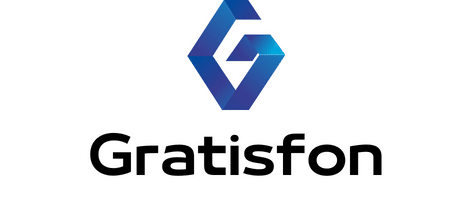How to Leverage Pop-Up Architecture in Temporary Real Estate Spaces?

The advent of the digital age has led to a drastic change in consumer behavior, with online shopping taking center stage. However, the significance of physical retail spaces remains undeterred. Despite the rise of e-commerce, customers still crave the tangible shopping experience. To meet this demand, brands are exploring innovative avenues in commercial real estate, with pop-up architecture for temporary retail spaces being a leading trend.
Pop-up stores are temporary commercial spaces that operate for a limited period, providing a platform for businesses to attract new customers, test new markets, and amplify their brand awareness. Leveraging pop-up architecture in temporary real estate spaces is a strategic move. It allows brands to deliver unique, immersive shopping experiences that resonate with their customers and stand out in the ever-competitive retail landscape.
Sujet a lire : What Are the Best Practices for Converting Brownfield Sites to Eco-Friendly Housing?
Emphasizing Brand Identity Through Pop-Up Store Design
The design of your pop-up store is a powerful tool that can communicate your brand’s identity, values, and story. Your store’s design should make a statement, striking a chord with your customers, and making them feel connected to your brand.
Incorporating your brand’s colors, logo and motifs into the store design can immediately create a sense of familiarity among your customers. Innovative displays, interactive installations, and creative merchandise arrangements can capture customer’s attention, encouraging them to explore your products.
Dans le meme genre : How to Integrate Urban Farming Initiatives into Mixed-Use Developments?
Furthermore, your store’s design can be an extension of your marketing campaign, reinforcing your brand’s message. For instance, if your brand promotes sustainable practices, you can incorporate recycled materials and energy-efficient solutions in your store design.
Creating Immersive Shopping Experiences
Customers are no longer satisfied with purely transactional shopping experiences. They are looking for something more, an experience that engages them, that makes shopping fun, enjoyable, and memorable. Pop-up stores, with their temporary existence, generate a sense of urgency and exclusivity, making them ideal for providing immersive shopping experiences.
You can leverage technology to enhance the shopping experience. Augmented reality (AR) and virtual reality (VR) can provide interactive and personalized experiences. For example, AR fitting rooms allow customers to virtually try on clothes, while VR can transport them to a digital environment that reflects your brand’s world.
Moreover, incorporating experiential elements such as workshops, demos, and tastings can engage your customers on a deeper level. These experiences can make your customers feel valued and appreciated, fostering loyalty towards your brand.
Utilizing Pop-Up Stores for Market Testing
Pop-up stores offer a cost-effective and low-risk platform for market testing. Whether you’re launching a new product or testing a new market, pop-up stores can provide valuable insights.
By setting up a pop-up store, you can gauge customer response to your new product, understand their preferences and identify potential improvements. Similarly, if you’re considering expanding to a new location, a pop-up store can help you assess the market potential and fine-tune your strategies.
Moreover, the temporary nature of pop-up stores allows for quick modifications and adaptations. You can easily tweak the product offering, store design, or marketing strategies based on customer feedback, ensuring your brand’s success in the new market.
Maximizing Visibility and Brand Awareness
For fledgling brands struggling to make a mark, pop-up stores can serve as an effective tool to increase visibility and brand awareness. Given their temporary and unique nature, pop-up shops often garner a lot of media and public attention, helping your brand reach a wider audience.
Location plays a critical role in maximizing visibility. Pop-up stores located in high footfall areas such as shopping centers, busy streets, or festivals can attract a significant crowd. Additionally, partnering with local influencers or hosting exclusive events can further boost your store’s visibility.
Effective marketing is key to ensure that your pop-up store’s existence doesn’t go unnoticed. Leverage social media platforms, email newsletters, and local media outlets to market your pop-up store and attract potential customers.
Integrating Pop-Up Stores Into Your Omnichannel Strategy
In today’s retail landscape, it’s crucial to provide a seamless shopping experience across all channels – online and offline. Pop-up stores can be an integral part of your omnichannel strategy, bridging the gap between your online and physical stores.
Pop-up stores provide an opportunity for your online customers to interact with your products in real life, enhancing their trust and confidence in your brand. Additionally, these temporary stores can also introduce your online brand to new audiences who prefer shopping in physical stores.
Incorporate digital elements into your pop-up store to provide a connected shopping experience. For instance, using QR codes for product information or mobile payment solutions can integrate the convenience of online shopping into the physical store experience. Similarly, offering click-and-collect or return-in-store services can further enhance the omnichannel experience.
In conclusion, pop-up stores are an innovative solution in the ever-evolving retail landscape. By leveraging pop-up architecture in temporary real estate spaces, brands can create unique shopping experiences, test new markets, enhance brand visibility, and provide a seamless omnichannel experience. With strategic planning and execution, pop-up stores can significantly contribute to your brand’s growth and success.
Utilizing Social Media for Pop-Up Shop Promotion
Pop-up shops are temporary by nature, and this makes it crucial to generate buzz quickly to reap the benefits before the store closes. Social media is an important ally in this mission, allowing you to reach a large audience effectively and economically.
Your social media strategy for your pop-up shop should start well before the doors open. Teaser posts, countdown timers, and behind-the-scenes content can build anticipation and curiosity among your audience. You can also leverage social media platforms for virtual tours, live-streaming store launch, product demos and Q&A sessions, engaging your followers and encouraging them to visit your pop-up store.
In addition, user-generated content (UGC) can be another powerful tool for promoting your pop-up shop. Encourage your visitors to check-in, share their experiences, or post selfies with your products. This can not only boost your online visibility but also foster trust and credibility, as UGC is often perceived as more authentic than brand-generated content.
Remember to use relevant hashtags to increase your content’s reach and discoverability. Collaborating with influencers or hosting social media contests can further expand your reach and drive foot traffic to your shop.
Adaptive Reuse of Real Estate for Pop-Up Shops
Pop-up stores usually operate in a short term, making it essential to find cost-effective real estate solutions. Adaptive reuse of real estate, which involves repurposing an existing building for a new use, can be a viable option for pop-up shops. It can reduce construction costs, save time and promote sustainability by reusing existing structures and materials.
Empty warehouses, vacant retail spaces, or even shipping containers can be transformed into trendy pop-up shops. These spaces often have a unique aesthetic and character, adding a distinctive charm to your store.
Adaptive reuse also allows you to be creative and flexible with your store design. You can take advantage of the existing structure’s features, like exposed brick walls or high ceilings, to create an interesting and inviting retail space.
Moreover, adaptive reuse projects can often draw attention due to their innovative approach, helping you generate word-of-mouth publicity and attract curious customers to your pop-up store.
Conclusion
Pop-up shops have emerged as a powerful tool in the retail world, offering a myriad of benefits for businesses. With thoughtful planning and execution, these temporary commercial spaces can be leveraged to create a memorable shopping experience, boost brand visibility, test new markets and seamlessly integrate with your omnichannel strategy.
The success of pop-up shops, however, largely depends on effective marketing, creative store design, and strategic use of real estate. Social media, with its wide reach and engaging content formats, can be instrumental in promoting your pop-up shop and driving foot traffic. Meanwhile, adaptive reuse of real estate can provide cost-effective and sustainable solutions for your pop-up store, adding to its appeal and uniqueness.
As the retail landscape continues to evolve, pop-up shops will undoubtedly play a significant role in its future. By embracing this trend, brands can stay ahead of the curve, engage their customers in new and exciting ways, and drive their growth in both the short term and long term.
